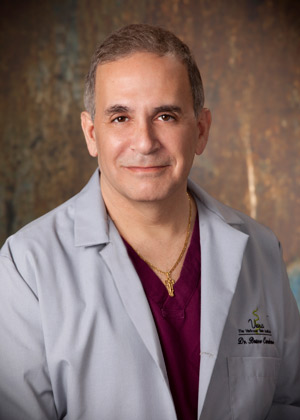“My grandfather is suffering from venous stasis. How is this condition treated?”
My grand father has been diagnosed with venous stasis causing swelling in his lower leg. What is the course of treatment for this condition? He is also a diabetic and a hypertension patient.
2 Answers
It is possible to treat this in a couple of ways. We would need to do an ultrasound screening to see exactly which veins were causing the problem and if they could be treated by laser ablation. A person with diabetes and hypertension can be treated, just monitored closely.
Patients often seek treatment of varicose veins due to their concerns of the unsightly, bulging visible varicose veins or spider veins. Often, these varicose veins are painful in and of themselves.
For patients with symptoms of leg heaviness, leg swelling, restless leg syndrome, or a history of a leg ulcer, the presence of saphenous vein reflux (or venous insufficiency) must be determined. This is accomplished with Duplex Ultrasound Technology.
Surprisingly, even many physicians are unaware that modern treatments for varicose veins exist that can help patients with leg pain, heaviness, and swelling. When doctors do recognize the presence of varicose vein disease they often send their patients to a radiology imaging center or a vascular lab for the ultrasound testing. This is very inconvenient for the patient, and often these non-specialized imaging centers do not perform the ultrasound examination for venous insufficiency correctly, thereby
misdiagnosing patients.
The treatment of varicose vein disease must begin with the saphenous veins if the ultrasound identifies reflux. Eliminating reflux with EndoVenous Laser Treatment (EVLT) is the modern, minimally invasive alternative to historic vein stripping surgery. EVLT treatments are performed in the office setting under local anesthesia. History of hypertension and diabetes usually does not prevent us from proceeding with the EVLT. The procedure consists of inserting a small laser fiber through a needle stick in the skin into the damaged vein under ultrasound guidance. Pulses of laser light are delivered inside the vein, which causes the vein to collapse and seal shut. The procedure is done in-office under local anesthesia with mild oral sedation. Your leg will be wrapped for one day, and you are encouraged to take a 30 minute walk the night after the procedure.
After the EVLT treatments are completed, further treatments focus on the remaining visible and painful varicose veins with MicroPhlebectomy treatments, until finally Sclerotherapy is indicated for any remaining spider veins.
For patients with symptoms of leg heaviness, leg swelling, restless leg syndrome, or a history of a leg ulcer, the presence of saphenous vein reflux (or venous insufficiency) must be determined. This is accomplished with Duplex Ultrasound Technology.
Surprisingly, even many physicians are unaware that modern treatments for varicose veins exist that can help patients with leg pain, heaviness, and swelling. When doctors do recognize the presence of varicose vein disease they often send their patients to a radiology imaging center or a vascular lab for the ultrasound testing. This is very inconvenient for the patient, and often these non-specialized imaging centers do not perform the ultrasound examination for venous insufficiency correctly, thereby
misdiagnosing patients.
The treatment of varicose vein disease must begin with the saphenous veins if the ultrasound identifies reflux. Eliminating reflux with EndoVenous Laser Treatment (EVLT) is the modern, minimally invasive alternative to historic vein stripping surgery. EVLT treatments are performed in the office setting under local anesthesia. History of hypertension and diabetes usually does not prevent us from proceeding with the EVLT. The procedure consists of inserting a small laser fiber through a needle stick in the skin into the damaged vein under ultrasound guidance. Pulses of laser light are delivered inside the vein, which causes the vein to collapse and seal shut. The procedure is done in-office under local anesthesia with mild oral sedation. Your leg will be wrapped for one day, and you are encouraged to take a 30 minute walk the night after the procedure.
After the EVLT treatments are completed, further treatments focus on the remaining visible and painful varicose veins with MicroPhlebectomy treatments, until finally Sclerotherapy is indicated for any remaining spider veins.




